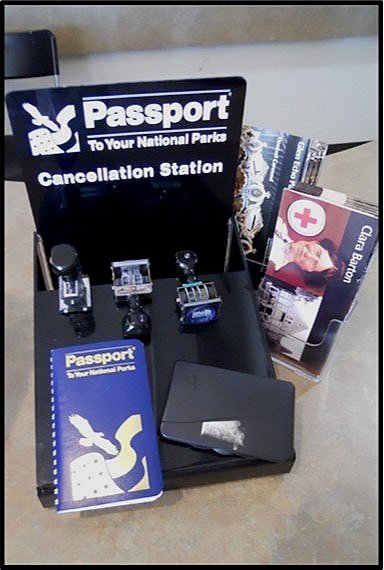Unique Stamps
If there is one attribute which helps push mankind to a better life it is innovation. Eastern National came up with many variants of the original, standard stamp, to help spur interest in visiting the parks. And did it ever catch on. When I visit a park there is usually someone else already at the stamping station, with someone else then waiting for me to finish.
There are some National Park enthusiasts who relentlessly pursue every known stamp. Two of the unique stamps from the past are shown below. Each park unit was provided a 100th Anniversary Centennial stamp in 2016, as well as special 25th Anniversary stamps for the Passport program. Do not be put off if when you visit a park you do not see these stamps at the stamping station. Many ranger teams have held onto these older stamps, one just needs to inquire, then cross your fingers.
Some park units have added their own flair to the program, creating unique designs, evident by the four shown below.
Anyway, if you happen to have any amount of collector’s DNA in your body, this is right up your alley. Perform some research on this topic, then begin your quest to obtain as many stamps as you can. It will be fun.




